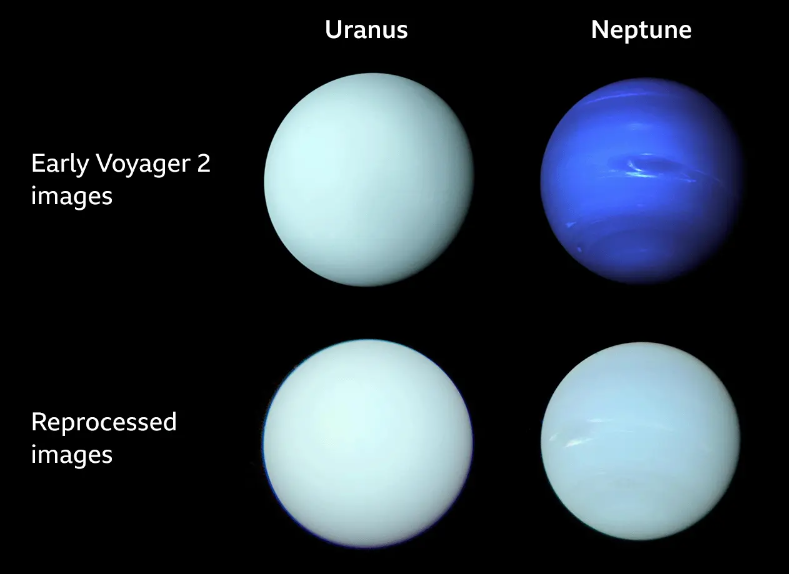Recent research conducted by a team of UK astronomers has significantly altered the understanding of the colours of Neptune and Uranus, two of the solar system’s distant ice giants.
For years, the general perception has been that Neptune is a deep blue, while Uranus exhibits a distinct green hue. This view was largely based on images captured by NASA’s Voyager 2 spacecraft during its mission in the 1980s. However, the study, which utilized data from the Hubble Space Telescope and the European Southern Observatory’s Very Large Telescope, has revealed a different reality.
The latest findings of the research team, led by Professor Patrick Irwin from the University of Oxford, show that both Neptune and Uranus are actually similar shades of greenish-blue. The disparity in the historical images can be attributed to the enhancement techniques used at the time. According to Professor Catherine Heymans, Astronomer Royal for Scotland and a University of Edinburgh astrophysics professor, the colours in the images of Neptune were intentionally tweaked to accentuate its atmospheric features. This enhancement led to the misconception of Neptune being a deeper blue than it actually is. Dr Robert Massey, deputy director of the Royal Astronomical Society (RAS), emphasized that enhancing images is a standard procedure in astronomical research and is crucial for highlighting details that would otherwise be invisible.
The study also revealed that Uranus appears a bit greener during its summer and winter, periods when one of its poles is pointed towards the Sun. Conversely, during its spring and autumn, when the Sun is over its equator, Uranus takes on a bluer tinge. This colour shift is attributed to the planet’s unique tilt and the resulting atmospheric changes. Neptune, while similar in colour to Uranus, shows a slight additional hint of blue. This subtle difference is due to a thinner haze layer on Neptune compared to Uranus.
This research stands as a testament to the evolving nature of astronomical study and the importance of revisiting and revising our understanding of the cosmos with the aid of advanced technology and methods.

